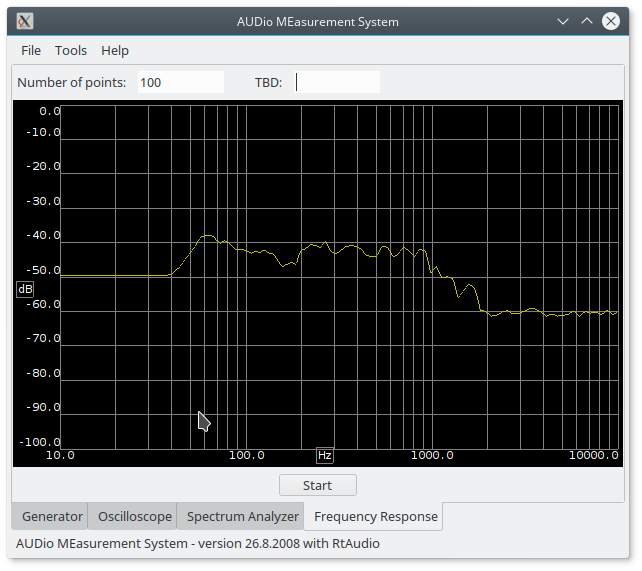PS: See
-the
-followup post for a even better approach.
-
-
A while back, I was asked by a friend how to stream the desktop to
-my projector connected to Kodi. I sadly had to admit that I had no
-idea, as it was a task I never had tried. Since then, I have been
-looking for a way to do so, preferable without much extra software to
-install on either side. Today I found a way that seem to kind of
-work. Not great, but it is a start.
-
-
I had a look at several approaches, for example
-using uPnP
-DLNA as described in 2011, but it required a uPnP server, fuse and
-local storage enough to store the stream locally. This is not going
-to work well for me, lacking enough free space, and it would
-impossible for my friend to get working.
-
-
Next, it occurred to me that perhaps I could use VLC to create a
-video stream that Kodi could play. Preferably using
-broadcast/multicast, to avoid having to change any setup on the Kodi
-side when starting such stream. Unfortunately, the only recipe I
-could find using multicast used the rtp protocol, and this protocol
-seem to not be supported by Kodi.
-
-
On the other hand, the rtsp protocol is working! Unfortunately I
-have to specify the IP address of the streaming machine in both the
-sending command and the file on the Kodi server. But it is showing my
-desktop, and thus allow us to have a shared look on the big screen at
-the programs I work on.
-
-
I did not spend much time investigating codeces. I combined the
-rtp and rtsp recipes from
-the
-VLC Streaming HowTo/Command Line Examples, and was able to get
-this working on the desktop/streaming end.
-
-
-vlc screen:// --sout \
- '#transcode{vcodec=mp4v,acodec=mpga,vb=800,ab=128}:rtp{dst=projector.local,port=1234,sdp=rtsp://192.168.11.4:8080/test.sdp}'
-
-
-
I ssh-ed into my Kodi box and created a file like this with the
-same IP address:
-
-
-echo rtsp://192.168.11.4:8080/test.sdp \
- > /storage/videos/screenstream.m3u
-
-
-
Note the 192.168.11.4 IP address is my desktops IP address. As far
-as I can tell the IP must be hardcoded for this to work. In other
-words, if someone elses machine is going to do the steaming, you have
-to update screenstream.m3u on the Kodi machine and adjust the vlc
-recipe. To get started, locate the file in Kodi and select the m3u
-file while the VLC stream is running. The desktop then show up in my
-big screen. :)
-
-
When using the same technique to stream a video file with audio,
-the audio quality is really bad. No idea if the problem is package
-loss or bad parameters for the transcode. I do not know VLC nor Kodi
-enough to tell.
-
-
Update 2018-07-12: Johannes Schauer send me a few
-succestions and reminded me about an important step. The "screen:"
-input source is only available once the vlc-plugin-access-extra
-package is installed on Debian. Without it, you will see this error
-message: "VLC is unable to open the MRL 'screen://'. Check the log
-for details." He further found that it is possible to drop some parts
-of the VLC command line to reduce the amount of hardcoded information.
-It is also useful to consider using cvlc to avoid having the VLC
-window in the desktop view. In sum, this give us this command line on
-the source end
-
-
-cvlc screen:// --sout \
- '#transcode{vcodec=mp4v,acodec=mpga,vb=800,ab=128}:rtp{sdp=rtsp://:8080/}'
-
-
-
and this on the Kodi end
-
-
-echo rtsp://192.168.11.4:8080/ \
- > /storage/videos/screenstream.m3u
-
-
-
Still bad image quality, though. But I did discover that streaming
-a DVD using dvdsimple:///dev/dvd as the source had excellent video and
-audio quality, so I guess the issue is in the input or transcoding
-parts, not the rtsp part. I've tried to change the vb and ab
-parameters to use more bandwidth, but it did not make a
-difference.
-
-
I further received a suggestion from Einar Haraldseid to try using
-gstreamer instead of VLC, and this proved to work great! He also
-provided me with the trick to get Kodi to use a multicast stream as
-its source. By using this monstrous oneliner, I can stream my desktop
-with good video quality in reasonable framerate to the 239.255.0.1
-multicast address on port 1234:
-
-
-gst-launch-1.0 ximagesrc use-damage=0 ! video/x-raw,framerate=30/1 ! \
- videoconvert ! queue2 ! \
- x264enc bitrate=8000 speed-preset=superfast tune=zerolatency qp-min=30 \
- key-int-max=15 bframes=2 ! video/x-h264,profile=high ! queue2 ! \
- mpegtsmux alignment=7 name=mux ! rndbuffersize max=1316 min=1316 ! \
- udpsink host=239.255.0.1 port=1234 ttl-mc=1 auto-multicast=1 sync=0 \
- pulsesrc device=$(pactl list | grep -A2 'Source #' | \
- grep 'Name: .*\.monitor$' | cut -d" " -f2|head -1) ! \
- audioconvert ! queue2 ! avenc_aac ! queue2 ! mux.
-
-
-
and this on the Kodi end
-
-
-echo udp://@239.255.0.1:1234 \
- > /storage/videos/screenstream.m3u
-
-
-
Note the trick to pick a valid pulseaudio source. It might not
-pick the one you need. This approach will of course lead to trouble
-if more than one source uses the same multicast port and address.
-Note the ttl-mc=1 setting, which limit the multicast packages to the
-local network. If the value is increased, your screen will be
-broadcasted further, one network "hop" for each increase (read up on
-multicast to learn more. :)!
-
-
Having cracked how to get Kodi to receive multicast streams, I
-could use this VLC command to stream to the same multicast address.
-The image quality is way better than the rtsp approach, but gstreamer
-seem to be doing a better job.
-
-
-cvlc screen:// --sout '#transcode{vcodec=mp4v,acodec=mpga,vb=800,ab=128}:rtp{mux=ts,dst=239.255.0.1,port=1234,sdp=sap}'
-
-
-
As usual, if you use Bitcoin and want to show your support of my
-activities, please send Bitcoin donations to my address
-15oWEoG9dUPovwmUL9KWAnYRtNJEkP1u1b.
-
